|
Related FAQs: Bivalves, Bivalves 2, & Bivalve Identification, Bivalve Behavior, Bivalve Compatibility, Bivalve Selection, Bivalve Systems, Bivalve Feeding, Bivalve Disease, Bivalve Reproduction, Tridacnids, Tridacnid Clam Business, Tridacnid Identification, Tridacnid Selection, Tridacnid Compatibility, Tridacnid Systems, Tridacnid Lighting, Tridacnid Placement, Tridacnid Feeding, Tridacnid Disease, Tridacnid Reproduction, Flame Scallops,
Related Articles: Mollusks, Giant
Clams/Tridacnids,
/The Conscientious Marine
Aquarist
Bivalves: Clams,
Oysters, Mussels... Class Bivalvia, Pt. 3
To: Pt. 1,
Pt. 2,
|
|
|
By Bob Fenner |
|
Family Pinnidae: Penshells
| Atrina rigida, the Stiff Penshell. Found
singly in sand, rock or sponges. Light to dark brown raised-ridge shells.
Tropical west Atlantic. Roatan 2019. |
%20MD.JPG)
|
| Pinna carnea, the Amber Penshell. Found
singly in mud, sand, interspersed between rocks on reefs,
fore-reefs. Look like their thin shells were stuck in the sand
facing up, slightly agape. Tropical west Atlantic. Bonaire pic of a
view from above. |
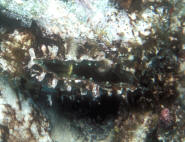
|
Bigger PIX:
The images in this table are linked to large (desktop size) copies.
Click on "framed" images to go to the larger size. |
|
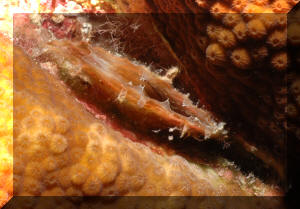
%20MD.JPG)
|
| Pinna rugosa, the Penshell.
Found singly in mud, sand, interspersed between rocks on reefs,
fore-reefs. Look like their thin shells were stuck in the sand
facing up, slightly agape. E. Pacific, Baja to Peru. Costa Rica (Pacific side) 2011 |
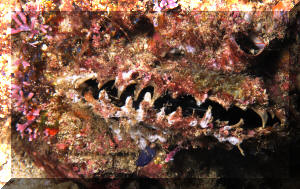
|
Family Pectinidae:
| Pedum spongyloideum (Gmelin 1791), the
Iridescent Scallop. Red Sea, Indo-Pacific. Live embedded in various
corals, usually Porites spp. Grow to a couple of inches across. Not
boring organisms, but preclude growth where they attach. Gili,
Lombok, Indo. and Red Sea pix. |
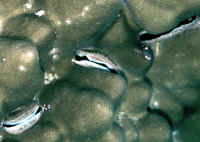 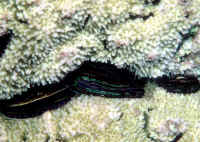
|
Bigger PIX:
The images in this table are linked
to large (desktop size) copies. Click on "framed" images
to go to the larger size. |
%20MD.JPG)
%20MD.JPG) |
Thorny Oysters, Family Spondylidae: Have sturdy, ribbed
shells, sometimes with continuing projections at their openings.
Attached to rocks. When open have colorful mantles and small bluish
eyes. Four Hawaiian species.
| Spondylus americanus Herman 1781, the
Atlantic Thorny Oyster. Caribbean. Deep red, rounded shell to six inches across. Here off
St. Lucia. |
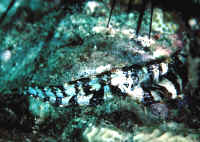
|
Bigger PIX:
The images in this table are linked
to large (desktop size) copies. Click on "framed" images
to go to the larger size. |
|
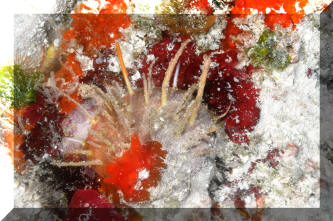
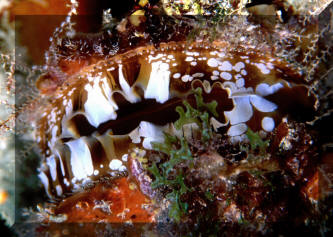
|
| Spondylus calcifer, Spiny Oyster. Mantle is
black/white banded with yellow streaking. To half a foot in diameter. Found
attached on rocky reefs to 75 feet depths. Sea of Cortez to Ecuador. Cabo
2016 |
%20MD.JPG)
|
| Spondylus linguaefelis Sowerby 1847,
Carl's Tongue Thorny Oyster. Long thin spines that reminded the
namer of a "cat's tongue" in their roughness. This is
a tentative ID... This animal photographed in S. Sulawesi. Range
given for this species as Hawai'i and Clipperton Islands. |
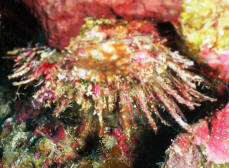
|
| Spondylus varians Sowerby 1829, the Variable
Thorny Oyster. The most common bivalve in its Western Pacific
range. Orange mantle, blue eyes, white spines (typically overgrown)
on overall shell. This one off the Gilis, Lombok and N. Sulawesi,
Indonesia. |
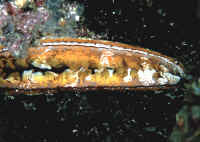
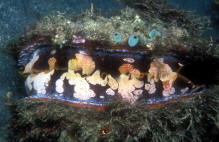
|
Bigger PIX:
The images in this table are linked to large (desktop size) copies.
Click on "framed" images to go to the larger size. |
|
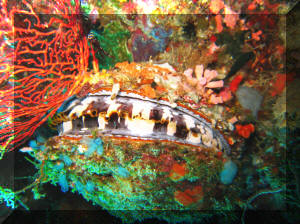
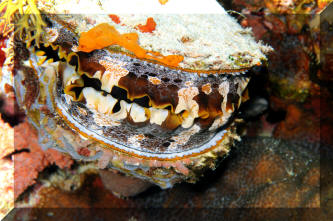
|
| Spondylus violacescens Lamarck 1819, the
Cliff Oyster. As the common name suggests, this bivalve is found on
the undersides and clefts of rocks. To four inches in diameter.
Empty attached shell often with white middle, purple or orangish
ring on inside perimeter. Big Island, Hawai'i pix. Here
attached under rocks. |
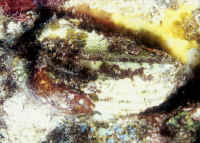
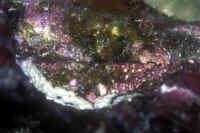
|
Bigger PIX: Spondylus sp. Red Sea
08
The images in this table are linked to large (desktop size) copies.
Click on "framed" images to go to the larger size. |
|
.JPG)
|
To: Pt. 1,
Pt. 2,
|
|

